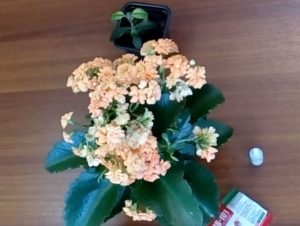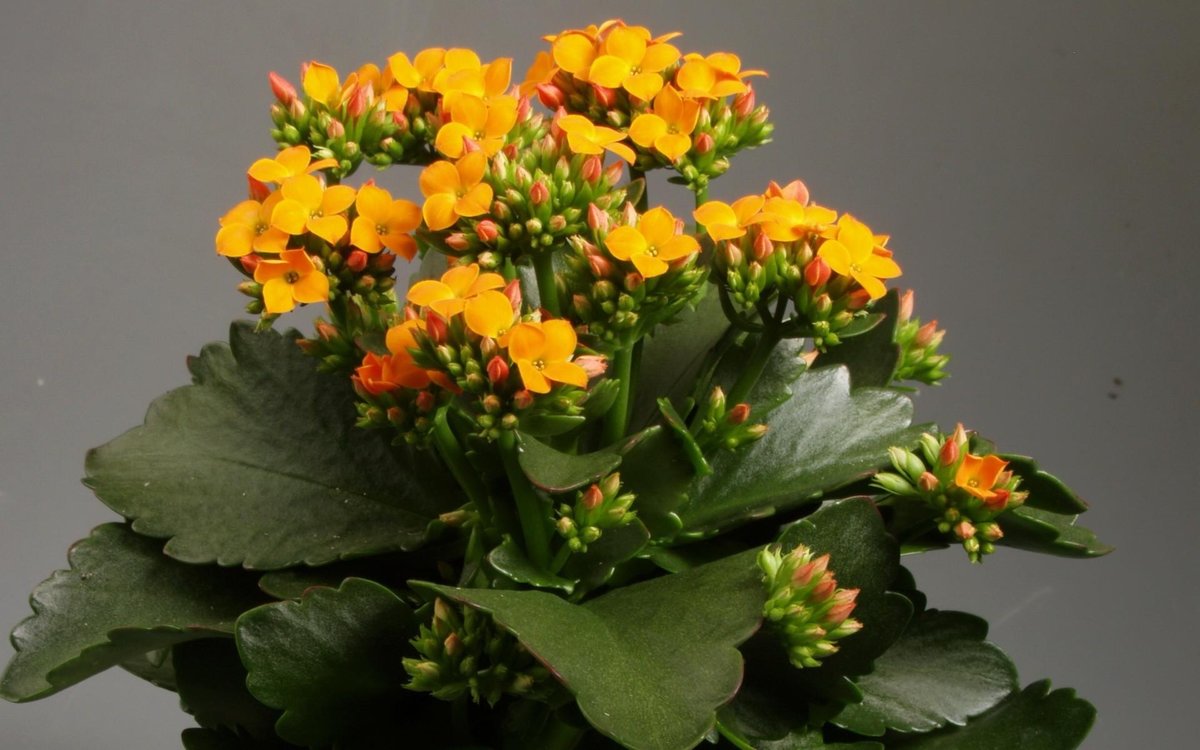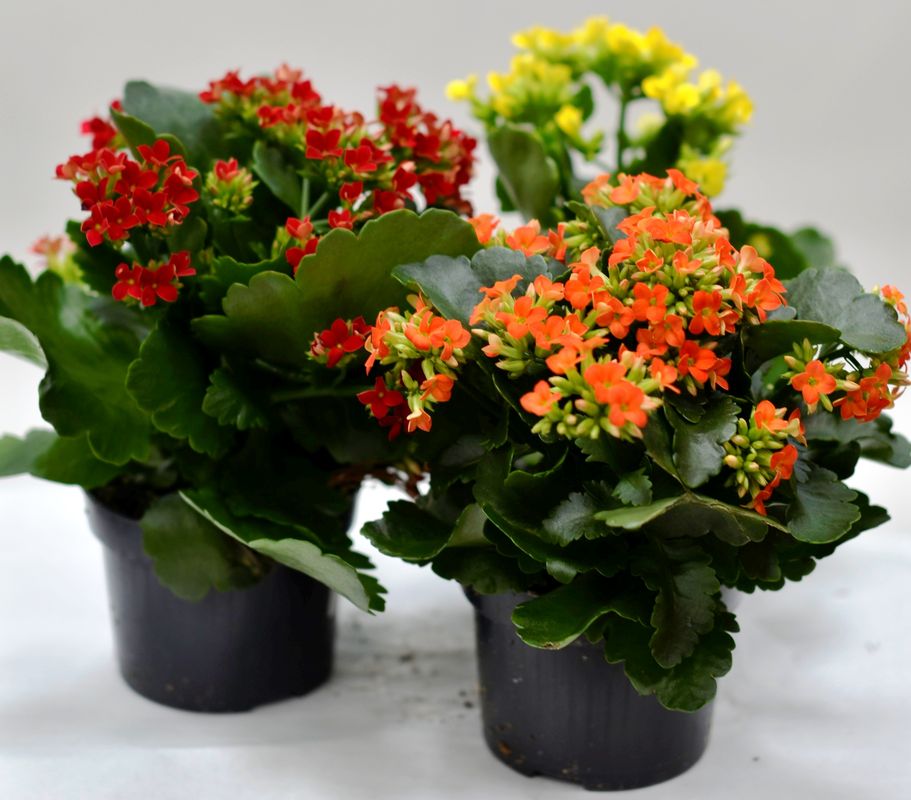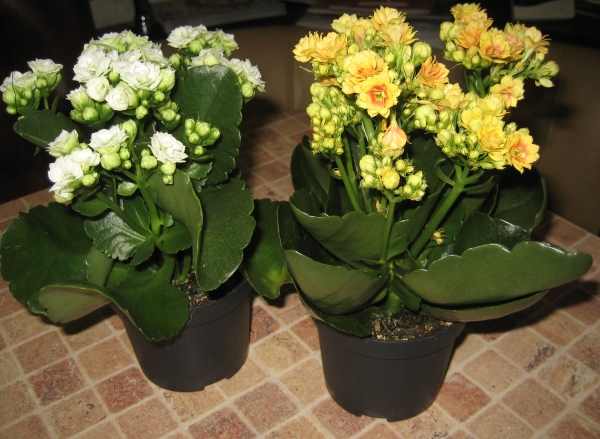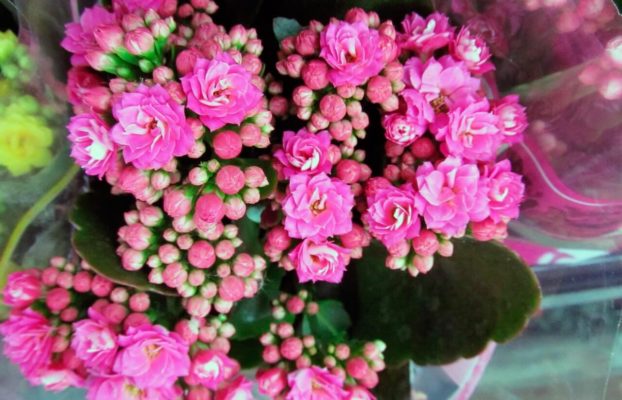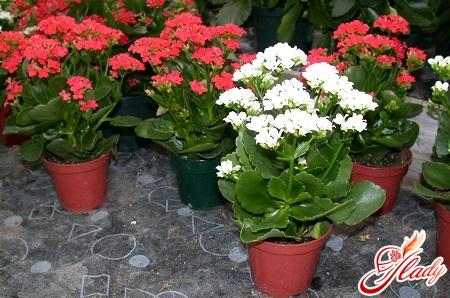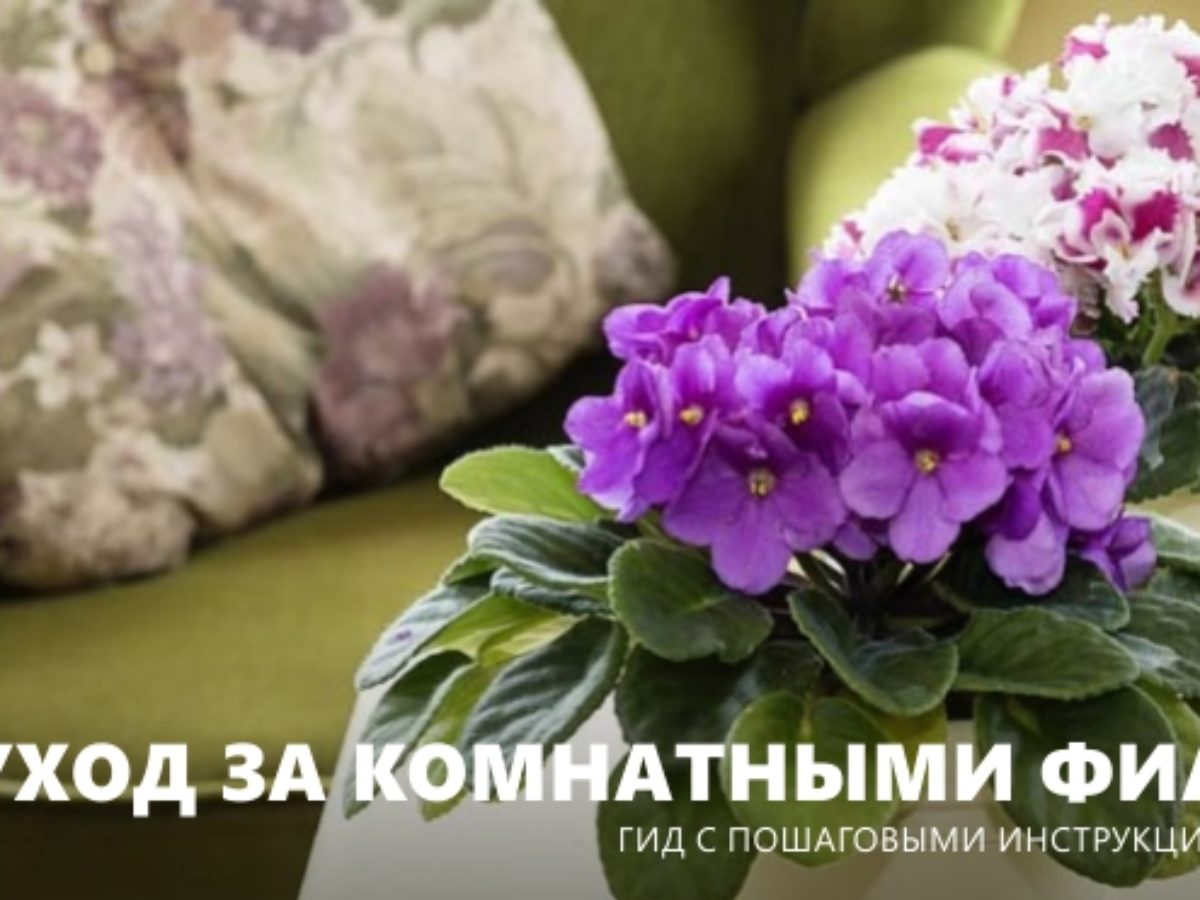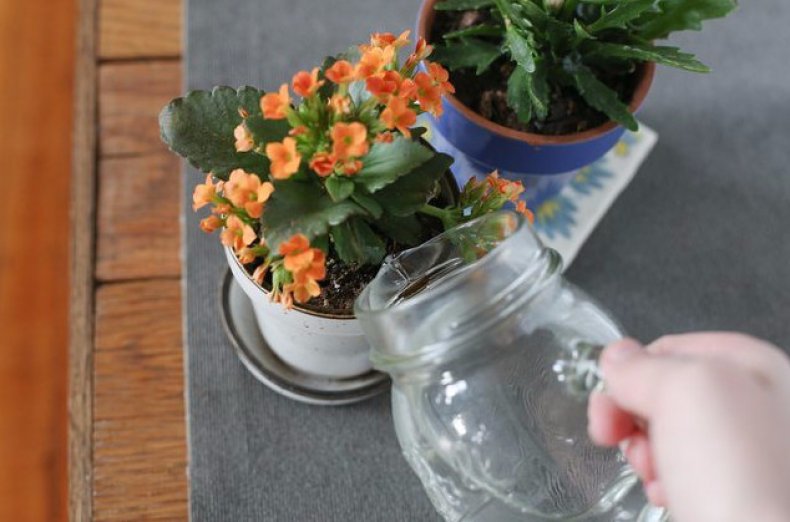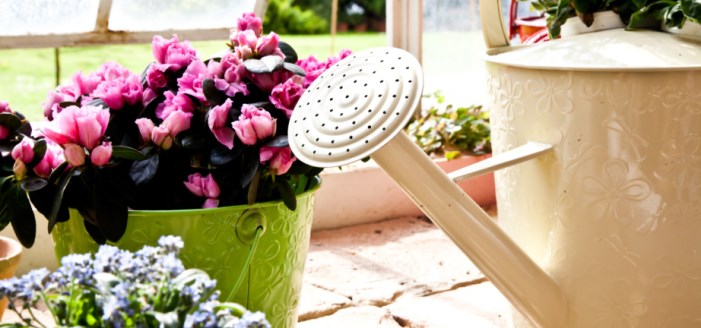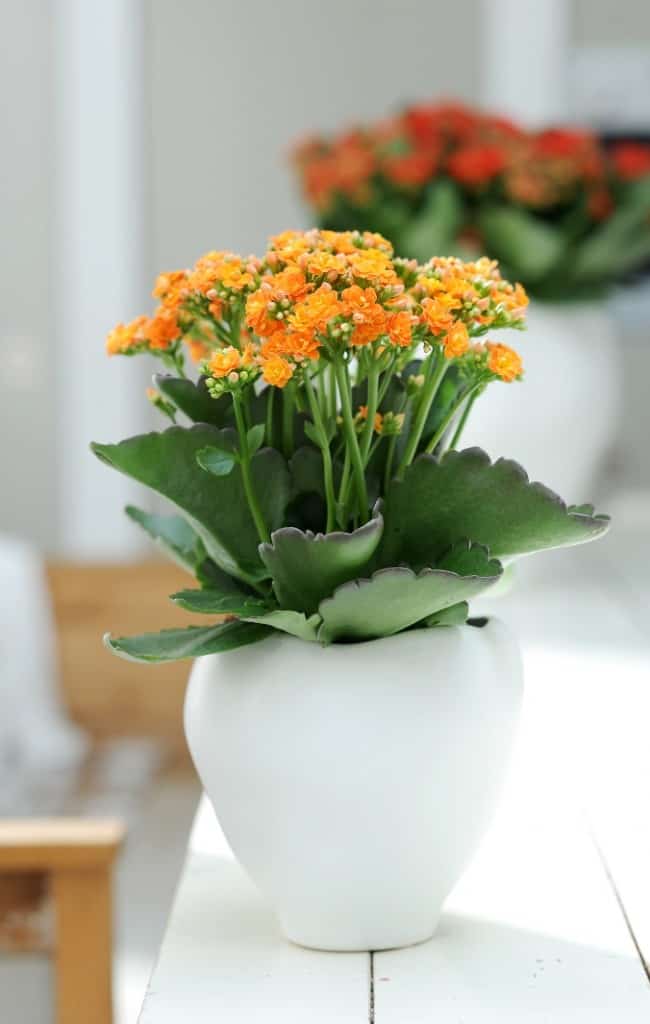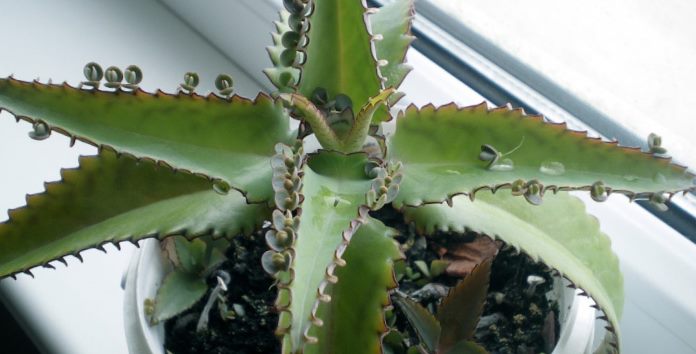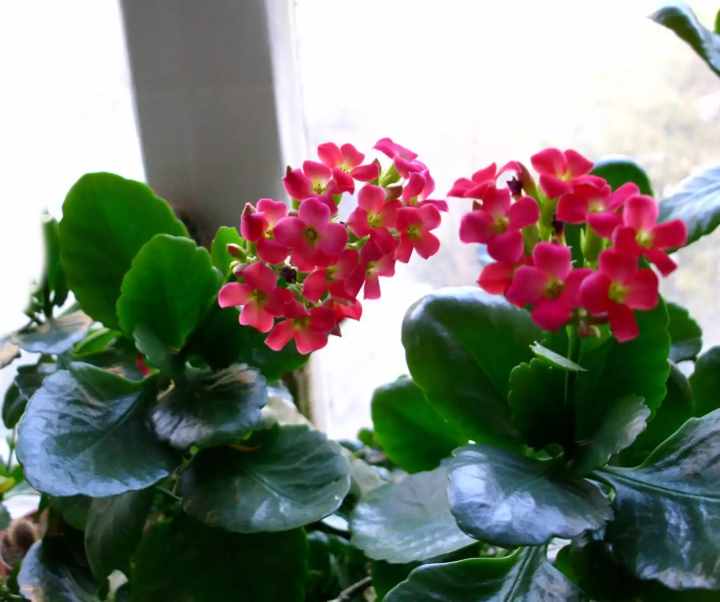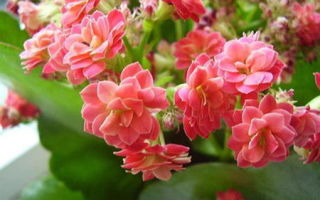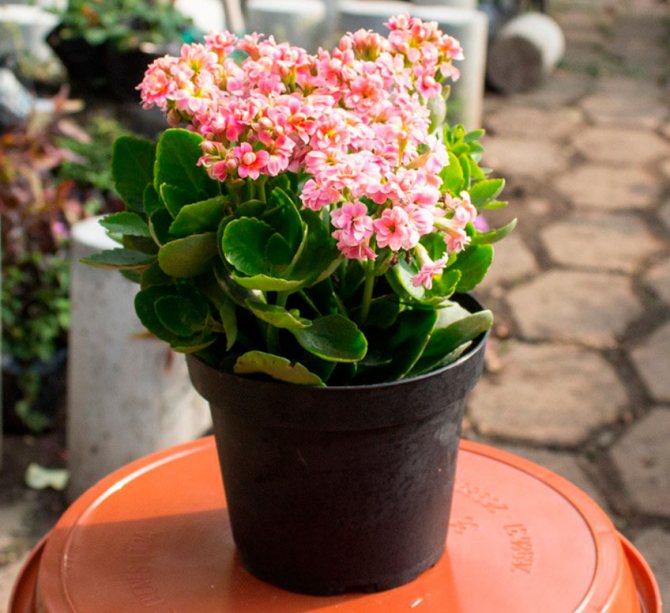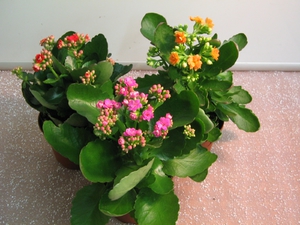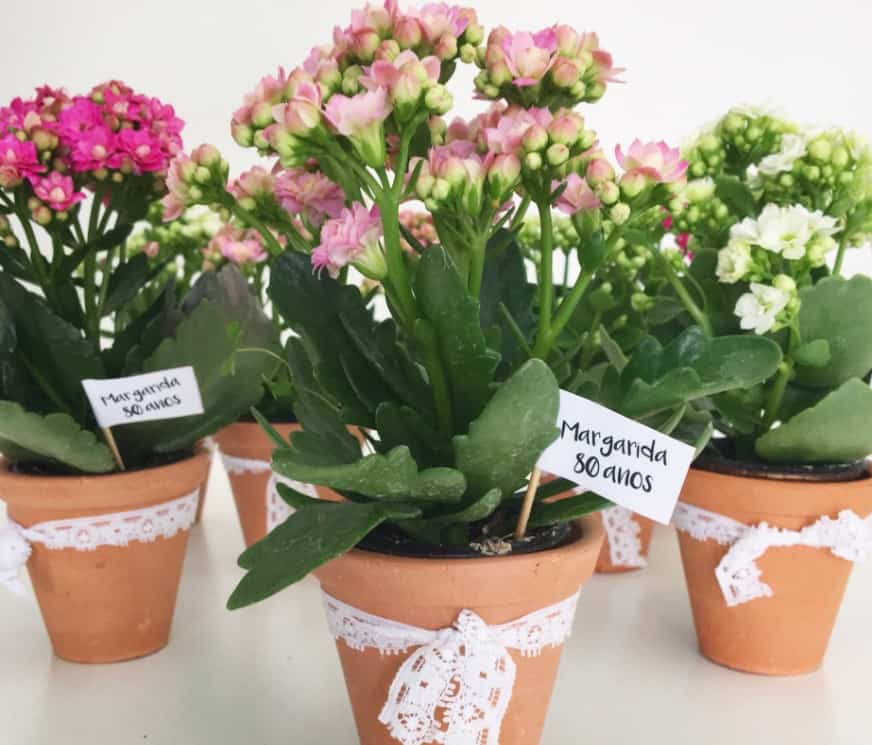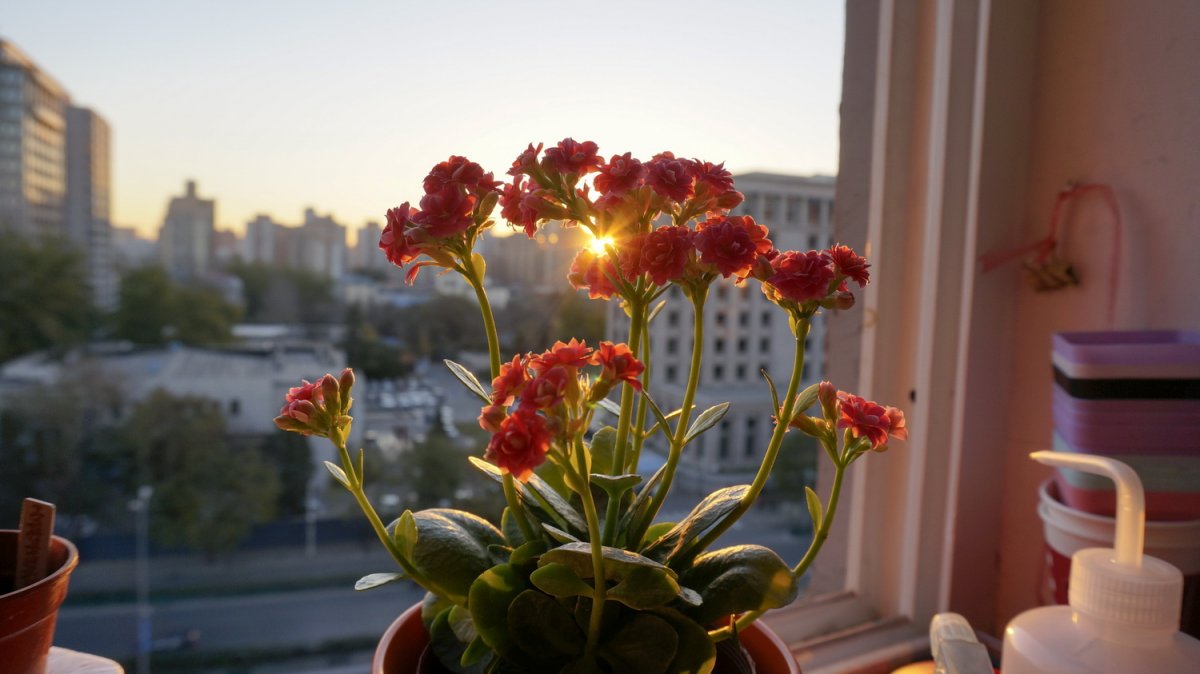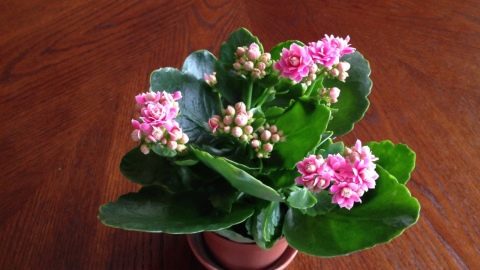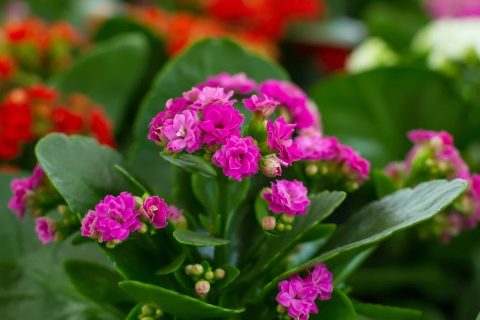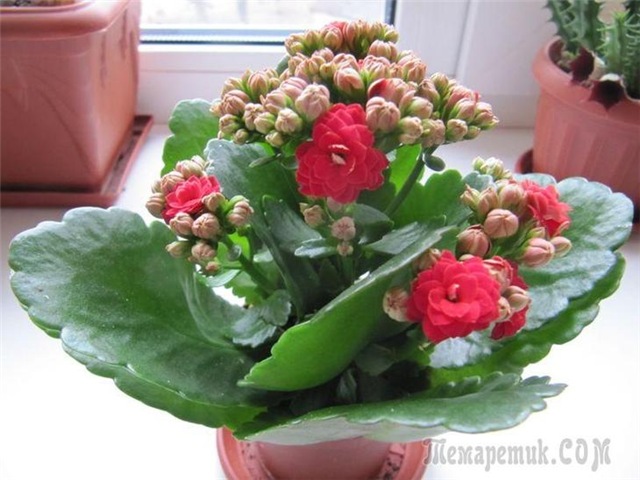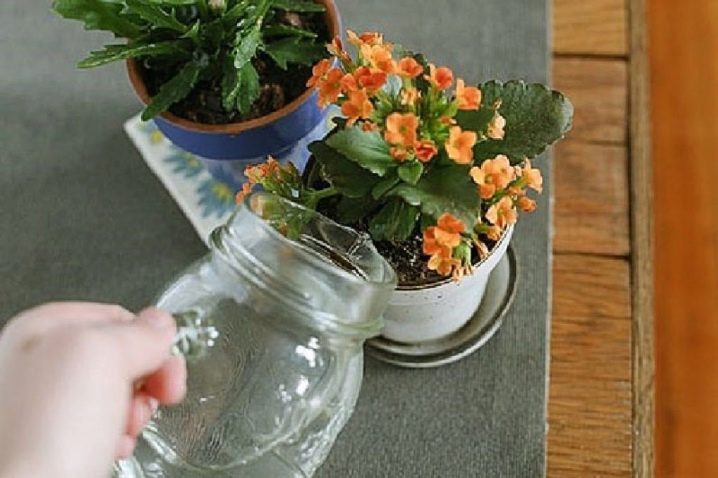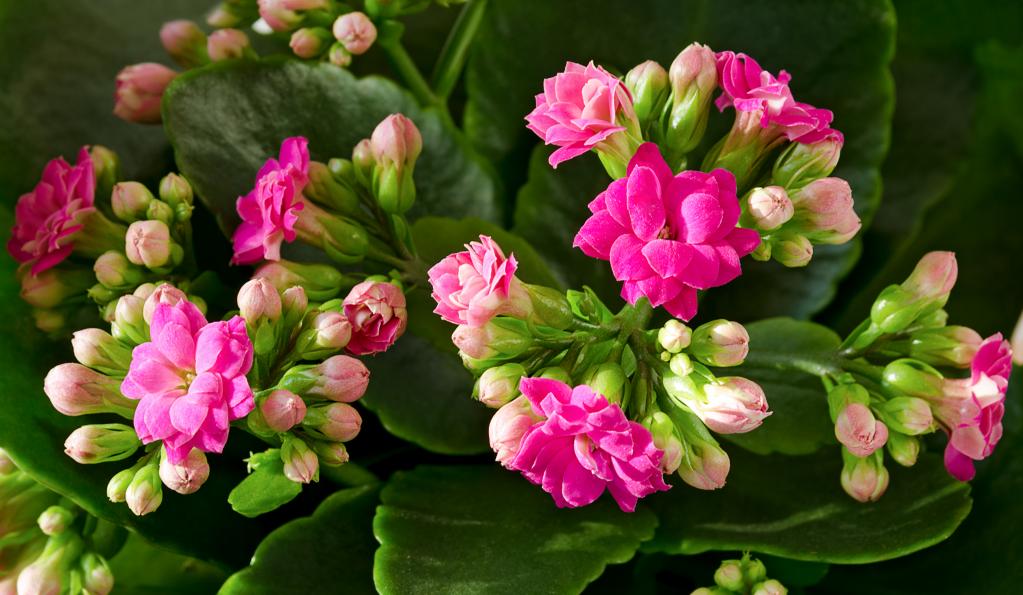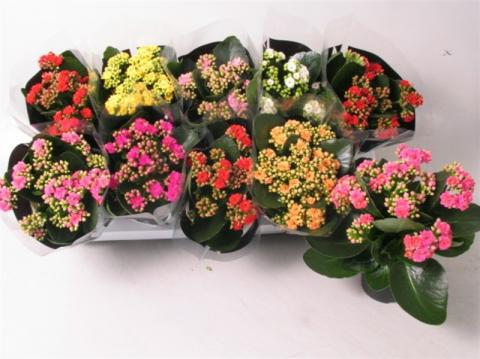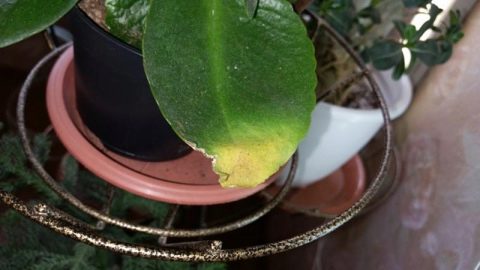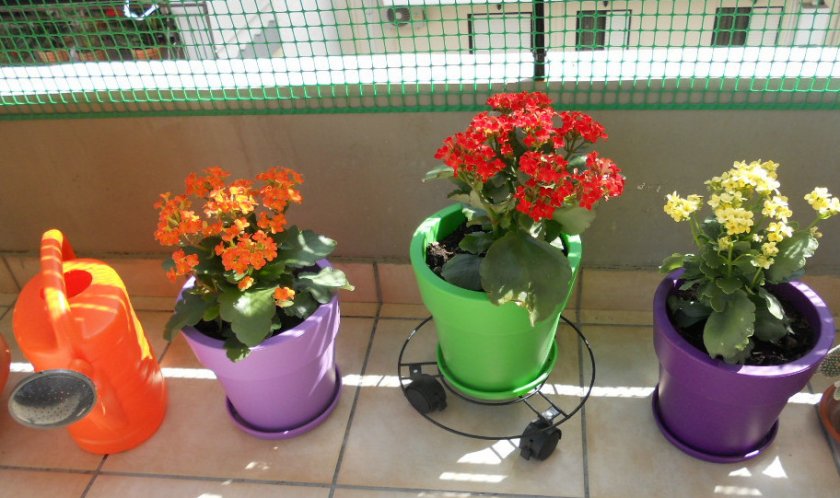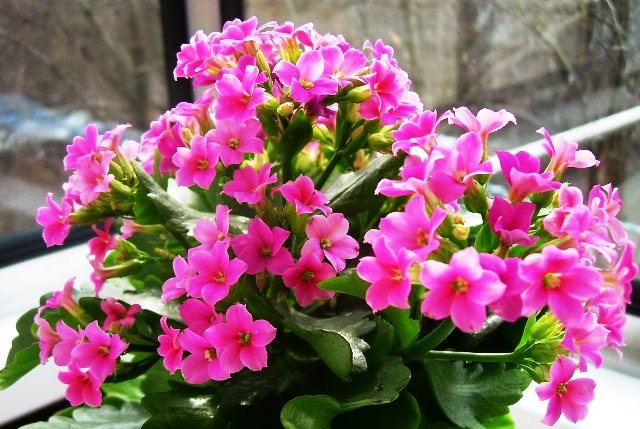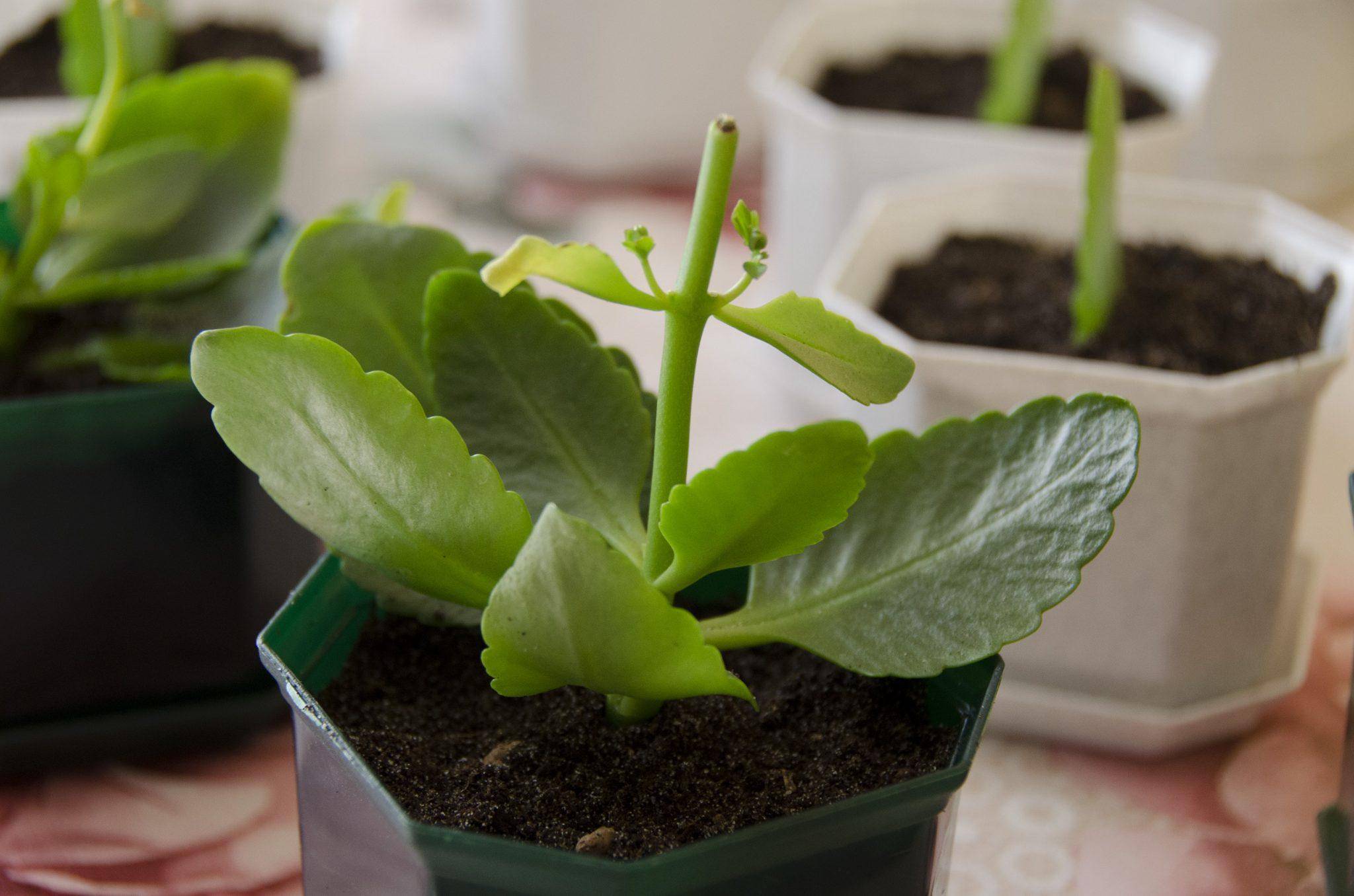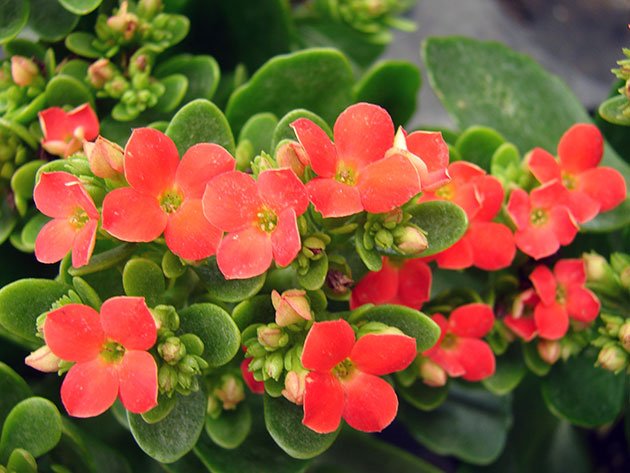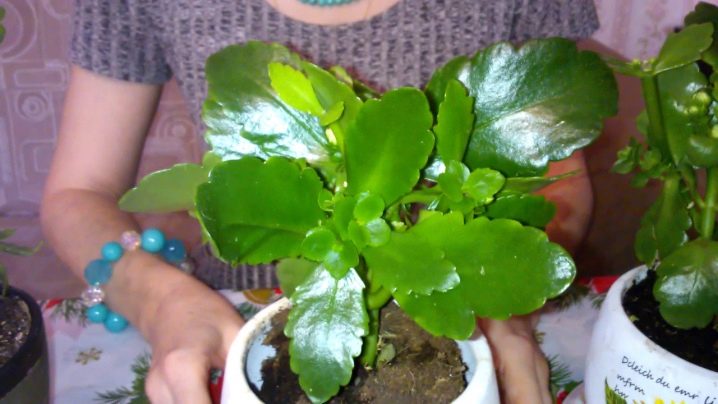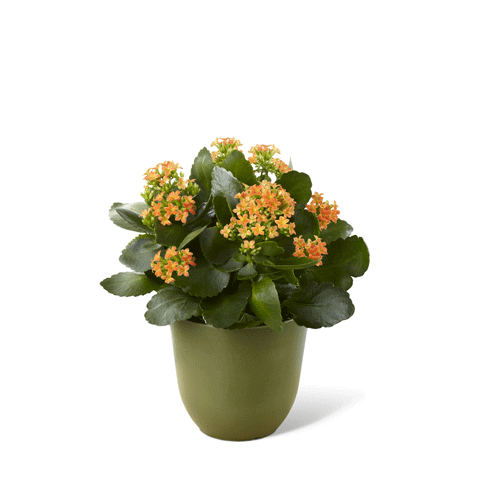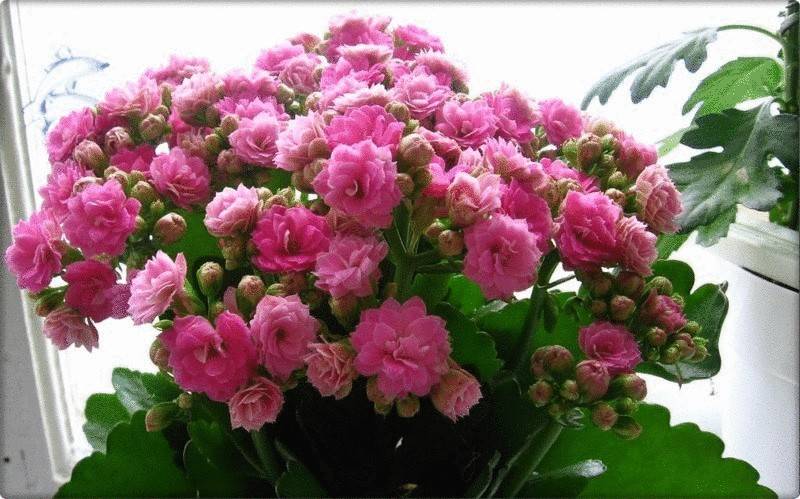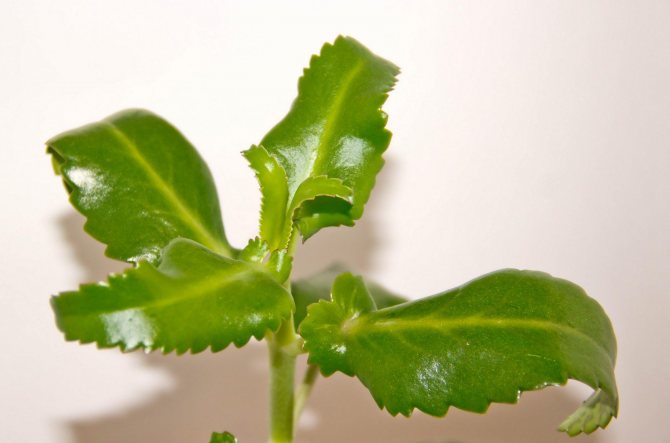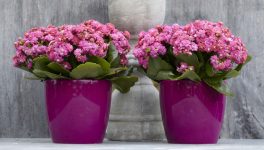Excess watering
Over-watering is the most common mistake. The signal that it is time to pick up the watering can will be the dried top layer of soil
Remember that water balance is essential for abundant flowering.
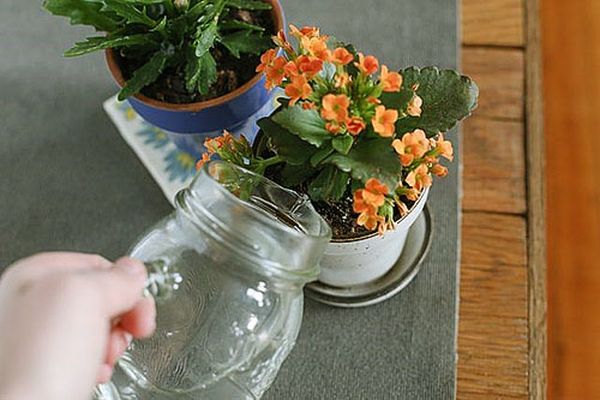
And now we will analyze in detail how to properly water the Kalanchoe at home. There are such rules:
You need to water the flower with settled water. Homemade Kalanchoe is watered infrequently, so there is no need to make large stocks.
Warm the water to room temperature. Cold water can cause serious illness.
When watering, it is correct not to hit the flower itself
The delicate stem can quickly rot.
It is important to keep the ground moderately moist.
Make sure that there is drainage at the bottom of the pot (the flower does not tolerate stagnant water).
The sump must always be dry (as soon as the water drains through the drain holes, drain it).
If you are interested in how to water the Kalanchoe - from above or below, then the first option is suitable for this flower. Proof of this is the last item on our list of rules. Kalanchoe often does not like watering, but it is necessary to soak the soil to the full depth. The necessary water will remain in the soil, and the rest will go into the sump. In order for the moisture content of the root system to always be within the normal range, it is necessary to maintain the soil in a loose state.
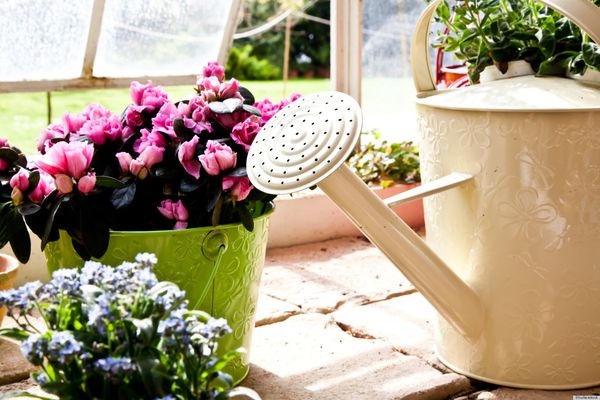
To do this, you need to add some components to the soil:
- Vermeculitis. The material is not subject to the processes of decay and decomposition, does not allow the appearance of mold.
- Perlite. The substrate retains moisture and gives it to the soil gradually and in the right quantities.
- River sand. The additive does not allow water to stagnate near the root system.
- Charcoal. The material will absorb excess moisture in case of flooding.
These components in the soil mixture should be at least one third. The notorious automatic irrigation system is unacceptable for the Kalanchoe. It can be used only in case of a long absence of the owners. Among the existing designs, there are drip systems, various dispensing figures and special containers with auto-irrigation. For our flower, only the third option is suitable.
How to water Kalanchoe at home for flowering
The frequency of watering Kalanchoe and the amount of water during flowering remains the same, however, a complex fertilizer containing phosphorus is used to lay bright buds. It is recommended to apply top dressing once a week.
In addition, faded Kalanchoe can be stimulated to re-lay flower buds at home. To do this, you need to carry out simple manipulations:
- Allow the plant to rest by slightly lowering the temperature of the content;
- Cut off all dried inflorescences so that they do not draw out the vitality of the plant;
- Reduce watering to 1 time in 2 weeks;
- Transfer the pot with a bush to a darkened place for 1 month, and then return it to a light windowsill;
- Increase watering - the frequency should be 2 times a week;
- During watering, use complex mineral formulations for feeding once every 2 weeks.
Kalanchoe is a succulent with thick green leaves and bright pink, white, yellow, crimson flowers. Belongs to the Fat family, requires minimal watering, tolerates the absence of fertilizers, and is rarely affected by pests. In general, caring for Kalanchoe at home is not difficult and even a novice florist can purchase it without fear.
And the Kalanchoe can look differently, because as many as 200 species are united in this genus! Some of them are distinguished by special decorativeness and bright colors, others - by medicinal properties.
At home, they are most often grown:
- Kalanchoe Blossfeld is decorative. Forms a compact bush, blooms with elegant umbrella-shaped inflorescences. The well-known variety series - Kalanchoe Kalandiva is characterized by double flowers.
- Kalanchoe Degremona is medicinal, the juice from its fleshy leaves is used to heal wounds, get rid of a cold, etc. Refers to bryophyllum (viviparous Kalanchoe breeding "babies").
- Kalanchoe pinnate is also a medicinal bryophyllum. Its oval leaves with patterns of veins resemble feathers, and this is how the species earned its name.
- Kalanchoe Mangina (Mangini) is an ornamental bryophyllum with long shoots that form an ampelous bush. It blooms with bright red bell flowers.
- Kalanchoe tubular (tubiflora) is an interesting bryophyllum with narrow leaves tucked inward and with many "children" along their edges.
- Kalanchoe dissected - the so-called "deer horns". It produces long shoots with dissected narrow leaves, shaped like deer antlers.
There are many other species, for example, felt Kalanchoe, Paniculata Kalanchoe, etc., but they are grown much less often.
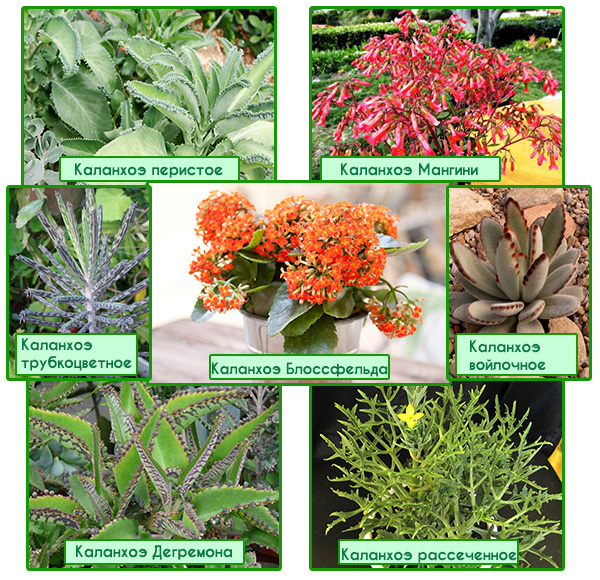
However, you can grow any Kalanchoe at home, adhering to certain care rules. They are practically the same for both flowering and deciduous species of this wonderful plant.
Trimming and shaping
All Kalanchoe tend to stretch and grow over time. Of course, for some time after the purchase, the Kalanchoe looks like a miniature squat bush (and even then, if you take proper care of it), but gradually, at home, the decorativeness of the plant decreases. The stems are pulled out, the leaves are shrinking.
To prevent this from happening, the Kalanchoe needs to be shaped by trimming and pinching.
Kalanchoe pruning is performed immediately after flowering. Withered peduncles are cut off and the stems are shortened. In place of the cuts, new shoots will appear, which can also be pinched for further branching.
Usually pruning and shaping of Kalanchoe is performed in spring / summer. Then, by the fall, many young shoots are growing on the plant, ready to give flower stalks. If you plan to stimulate the plant to bloom at another time (this is possible by artificially reducing daylight hours, it is written about this later - scroll down the page), then pruning should be stopped a couple of months before the start of stimulation.
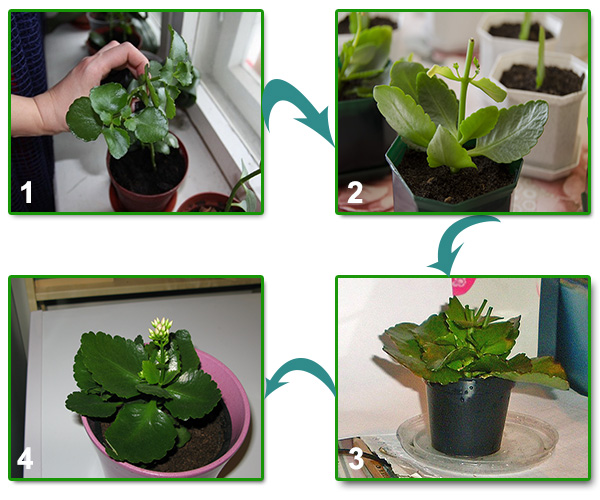
Signs and superstitions
Healing plants such as Kalanchoe emit positive energy to the person and the house in which they are located. Here's what the people say about the Kalanchoe:
- This plant harmonizes the atmosphere in the house, removes negative energy. In a family that will lead Kalanchoe houses, good relations will be established, there will be less swearing and disputes.
- It is customary to grow the flower on the windowsill of the kitchen, because the whole family gathers there, and the Kalanchoe is the keeper of the family hearth.
- Kalanchoe blooms in families with a good friendly atmosphere, if your plant has not bloomed for many years, then one of the family members is dishonest in their feelings or good intentions.
- If there is a person in your family who often gets angry or swears, put this plant in his room. It sets a person up for positive emotions, and absorbs the energies of anger and anger.
If we consider the teachings of Feng Shui, Kalanchoe refers to the element of Fire (Plants preferring well-lit rooms). May help people suffering from depression and despondency. Helps to find peace of mind. Recommended for growing grandmothers and grandfathers, for removing "heaviness" from the body and soul.
Also, the teaching helps us choose a plant to our liking:
- If you want to attract money to your family, choose a type with small rounded leaves (K. Mangina).
- To fill your home with creative energy, choose species that grow upward (K. Dergemon, felt, feathery).
- To ground strong energy flows, ampelous species are used, in which shoots grow down to the ground (K. Tessa, Mangina).
- To enhance energy flows, place a plant with pointed leaves (dissected, tubular Kalanchoe) at home.
Kalanchoe: home care
The principles of care are as follows:
- regular watering;
- necessary lighting and temperature conditions;
- transfer;
- correct feeding;
- protection from disease.
Below we will take a closer look at each of these principles.
Watering
The flowering plant does not have any serious watering requirements, even prefers a slight drought. Of course, in hot weather, Kalanchoe needs to be watered as often as possible, but in winter, the frequency of watering is reduced to once every two weeks. It should be remembered that stagnant moisture contributes to the appearance of rot, which can even destroy the plant.
It will be better if the flower pot contains drainage in addition to soil, which will keep the soil in optimal condition. Watering plants is carried out not only from above, but also in the pallet.
Lighting and temperature control
Flower care includes proper lighting and proper temperature conditions. Unlike most indoor plants, flowering Kalanchoe loves direct sunlight. In winter, he prefers to be at rest and is transferred from a sunny window to a darkened one.
Surprisingly, in order for the plant to start blooming, it is necessary to reduce its length of daylight hours. Under natural conditions, this happens with the onset of winter, therefore, the Kalanchoe begins to bloom in the cold period. If the florist wants this to happen at another time of the year, it is necessary to artificially reduce the daylight hours to 10 hours. To do this, you can put a tight bag on the pot or put it in the closet at a certain evening time, and take it back in the morning.
An important point in the care is the temperature regime, which also differs in summer and winter. In warm weather, the flower can be in a room with a temperature of +18 to +28 degrees, and in winter it easily tolerates cooler conditions with a temperature of +10 to +16 degrees. The decorative Kalanchoe even likes an insulated loggia or balcony.
Kalanchoe transplant
For comfortable living at home, this plant must be transplanted, since its root system grows very quickly. This must be done in April-May, during the intensive growth of the flower. The duration of daylight hours should be 12 hours and, if necessary, create additional lighting.
For transplanting, a new pot is used, which should be much wider than the previous one, and the composition of the earth should remain the same. The flower should be removed from the container very carefully so as not to accidentally damage the earthen lump.
Blooming Kalanchoe does not impose special requirements on the quality of the soil, therefore it can be perfectly located both in dense and loose soil. It is good to add some more sand. When preparing the soil for transplanting a flower at home, it should be disinfected.
Top dressing
In order for the Kalanchoe to bloom magnificently and beautifully, it is necessary to fertilize it correctly and in a timely manner. This must be done once a month. It is best to feed the plant with fertilizer for succulents, however, the use of complex additives guarantees abundant flowering.
Fertilizer is applied very carefully, since an excessive amount of feed contributes to the abundant growth of green mass, but you can not wait for flowers. It is best to add half of the norm indicated on the package.
Disease protection
 Caring for Kalanchoe at home includes protecting it from various diseases. Although this happens quite rarely, you should be prepared for anything.
Caring for Kalanchoe at home includes protecting it from various diseases. Although this happens quite rarely, you should be prepared for anything.
If the leaves of the plant are covered with white, gray or brown spots, this indicates that a change in care is required. For example, stains occur due to excessive soil moisture, so the moisture intake should be reduced. Excess fertilizing can also affect their formation, in which case the use of fertilizers is stopped or the soil is changed.
Often indoor flowers are attacked by aphids, due to which the leaves begin to turn yellow and fall off. To cure the plant, the affected areas are cut off and treated with a preparation for these insects or soapy water.
Top dressing and pruning
To get a beautiful blooming green creature at home, you need to fertilize in a timely manner. The frequency of fertilization is once a month. You need to feed with fertilizer for succulents, but the use of complex additives will ensure abundant flowering.
Fertilizers should be applied carefully, because an excess of feed can provoke an abundant growth of green mass, and you may not wait for flowers. Therefore, it is recommended to apply half of the rate indicated on the fertilizer package. Moderate feeding at home will also have a beneficial effect on the growing representative of the flora.
The formation of a bush is an integral part of the care of a blooming pet. On a young bush, it is necessary to pinch the shoots to give the flower the correct shape. Also, on an adult flower during the period of active growth (spring-summer), the upper part of the shoots must be cut off to form lateral stems.
Removing diseased, damaged leaves and shoots is essential for good flowering. It is necessary to cut off the faded buds, and it is advisable to do this as close to the stem as possible in order to protect the flower from rot.
Video about care and breeding
However, the flower is not very susceptible to disease, but when growing it at home, we must be ready for anything. Therefore, we will consider the main signs of "malaise" of the flower and determine what kind of care to provide in order to cure it.
Most often, a pet shows that he is uncomfortable through the leaves. That is, if you notice gray, white or brown spots on the leaves, this is a sign that you need to change the care, or rather its mode.
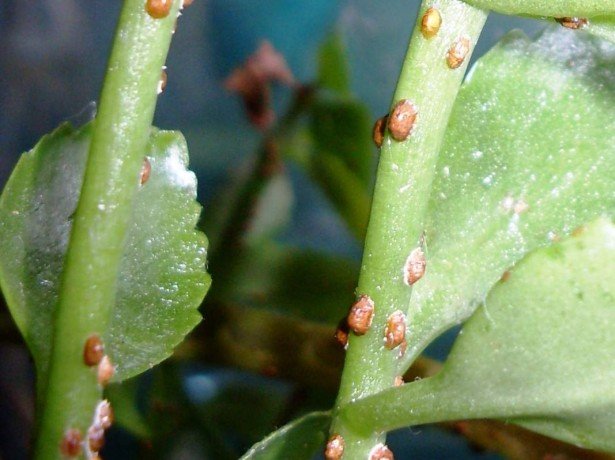
Most often, a pet shows that he is uncomfortable through the leaves.
Since the indoor handsome loves a moderate watering regime, the appearance of spots indicates that the soil is excessively waterlogged. The method of combating the disease is to reduce watering, the use of additional light sources. It also happens due to excessive feeding. Therefore, for recovery, the use of fertilizers should be canceled, and at best, the soil should be changed.
Aphids - attack for your favorite window decoration. When these small insects appear, the leaves turn yellow and fall off, the buds are absent. For treatment, you need to cut off the affected areas and treat with an aphid preparation or a soap solution.
We made sure that it is not difficult to take care of the blooming Kalanchoe at home. If you follow the described home care methods, you will enjoy beautiful flowering for at least one month.
Video about how to care for flowering Kalanchoe
If you provide the handsome man with access to bright light for 9-10 hours, and then remove it to a dark place, cut the flowers in time and fertilize once every two weeks, then the pet will answer you with an increase in the flowering period.
And after this enjoyment, do not forget to provide your green creature with a dormant period, and, therefore, stop caring, reduce watering and lower the temperature of stay.
Probably, now there is no house in which, at least in one instance, a pot of Kalanchoe would not grow - a plant that is not only beautiful and unpretentious, but is also used in folk medicine as in many diseases of varying complexity and type, from a common cold and colds to skin diseases.
Despite the unpretentiousness of the plant, you still need to know the basic rules, what temperature suits it, what kind of lighting, how to properly water the Kalanchoe. Proper watering for this plant is extremely important. Although it was brought to us from tropical countries, it does not like excess water, with excessive watering it grows poorly, rots
When watering, it is important to pay attention so that water does not fall on the stem of the plant, but exclusively on the soil, therefore it is recommended to pour water under the walls of the pot
We will determine how often to water the Kalanchoe in order to avoid stagnation of water and drying out of the earth. Here you need to focus solely on your own observations, checking the condition of the soil. Water should not stagnate and flow out of the pot. In the case of the Kalanchoe, the rule works that it is better not to top up than to pour. If it is noticeable that the ground has already completely dried out from the previous watering, you can water again. If it is still wet, and the water continues to flow, the plant will get sick and die quickly enough.
Varieties and their features
Kalanchoe, being at the same time an ornamental and healing plant of the succulent genus, is very popular with many gardeners. He struck the flower with his riot of colors, the variety of forms of leaves, as well as flowers.
The tree of life, home doctor, indoor ginseng - what names did Kalanchoe acquire for its usefulness and value. Although the different styles of this plant look different, they all have medicinal properties. In total, more than 200 species of Kalanchoe have been found in nature. Under normal conditions, only a few of them are raised at home. As a rule, Kalanchoe pinnate, Kalanchoe Blosfeld, Kalanchoe Daigremont, one-flowered Kalanchoe.
But whatever you buy a Kalanchoe, the care under normal conditions at home for any representative of such a plant is approximately equal. After all, they all belong to the same family - the bastards. These flowers are inhabitants of the tropics. They are designed for long-term presence, both in dry conditions, and similarly in conditions of increased dampness. Kalanchoe leaves in favorable phases accumulate moisture, which after the plant can be used for survival. In addition, this flower does not need to be fertilized often, as well as transplanted. We can say that this plant gives us more than it requires of us.
Likewise, these indoor flowers are characterized by resistance to various diseases and pests. Among other things, even a plant that has begun to rot or disappear can be ripe to be divided into cuttings, and also rooted. It multiplies quickly and often independently by means of children.
Kalanchoe Blossfeld
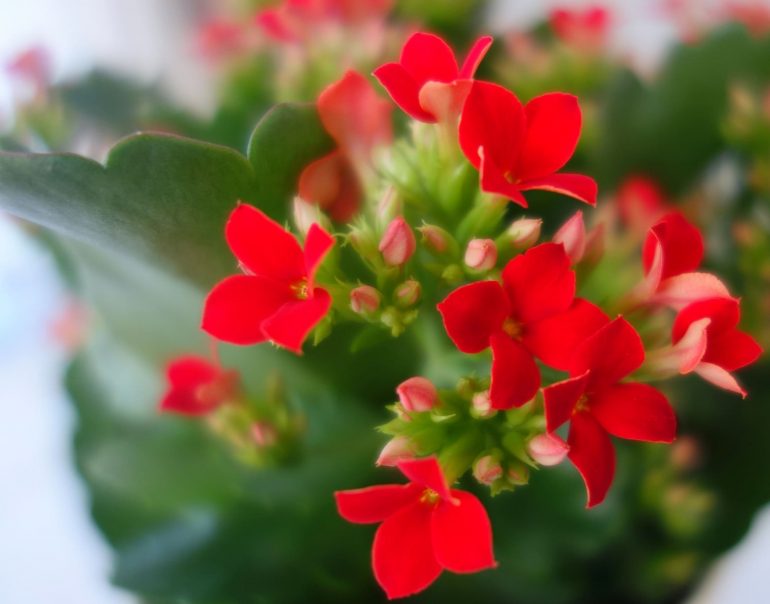
Kalanchoe Blossfeld is considered the most common type of this plant. The plant is about 20-30 cm long and feels comfortable in the shade. Many branches depart from the stem, on which large green leaves with a red rim grow. The edge of the leaves is uneven, humpbacked.
The flowering of this species begins in February, the flowers are small in size, decorated in the form of dense, bizarre inflorescences. The duration of this period is 3-4 weeks. The color of the flowers depends on the variety of the given species: there are white, orange, yellow, red and pink.
Blossfeld's Kalanchoe variety is Calandiva. These plants are considered to be more adapted to life in indoor conditions. They are small in size and the flowers are quite large. Rosalina also comes from Blossfeld's Kalanchoe, a short, double-flowered plant.
Kalanchoe bekharskoe
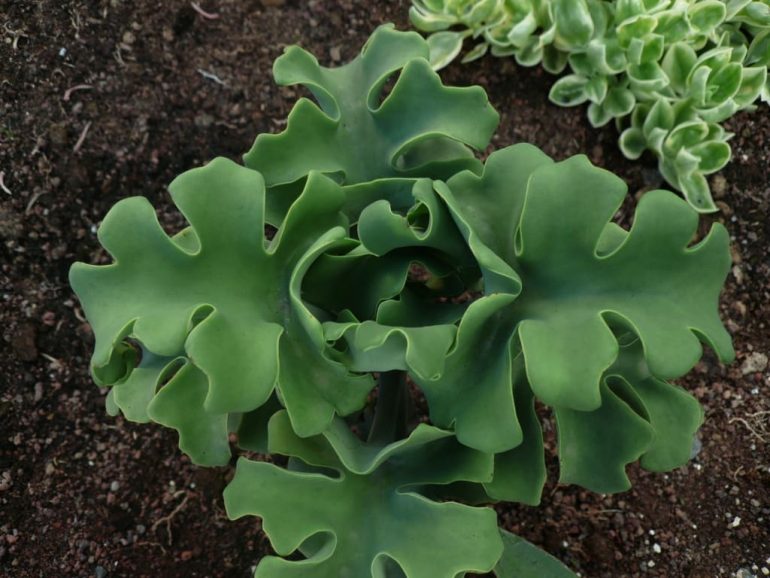
The plant is large, tree-like, in nature it can reach a height of 5-6 meters. The stem is dense, thick and long, you can see stripes in the form of triangles on it - the result of foliage falling off. The leaves in the lower part of the plant quickly fall off and undergo drying, they are large, can reach a length of up to 20 cm.
The leaves are velvety, uneven, with large denticles. It blooms very beautifully: the flowers are yellow-green, on which you can see purple stripes directed towards the tip of the leaf. Flowers are collected in panicle-shaped inflorescences, their length can reach 35 cm in height.
At home, it is best to leave only young plants on the windowsill, and adult Kalanchoe of this species are suitable for large rooms or greenhouses with sufficient lighting.
Kalanchoe "Tessa"
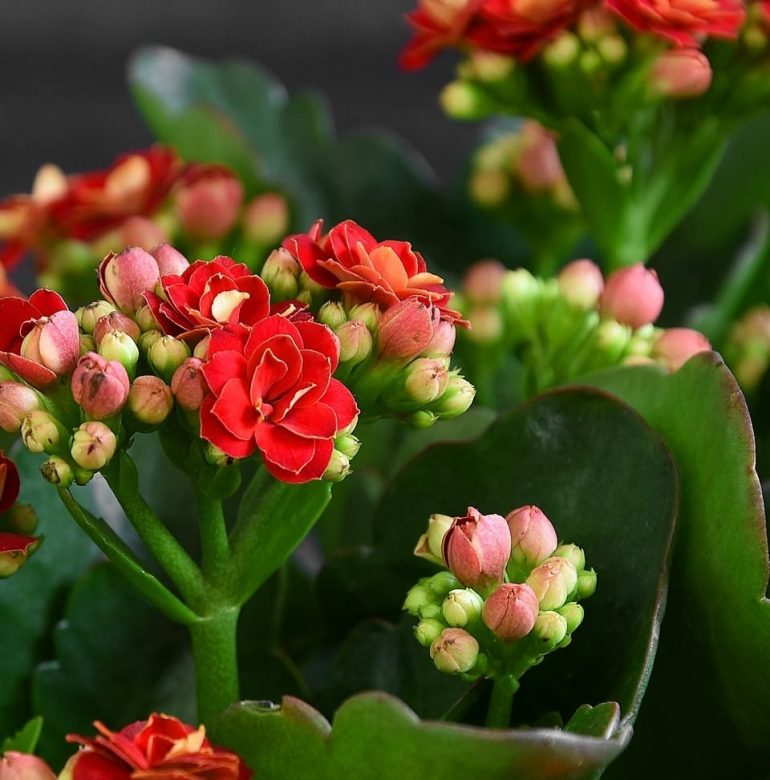
This species, when blooming, has beautiful pink flowers in a bizarre bell shape. The time of flowering is in the spring, but sometimes it can be in the summer. Ideal for home cultivation.
Kalanchoe Mangina
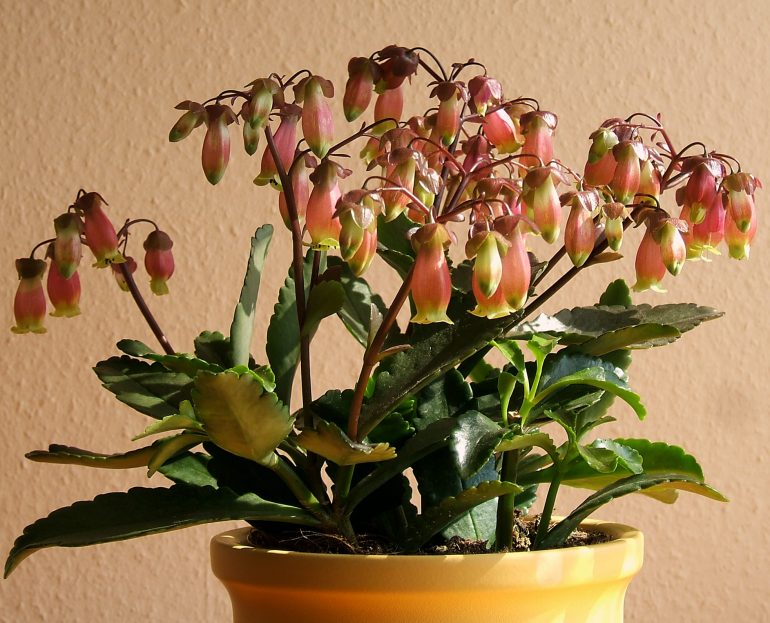
Kalanchoe Mangina - the appearance is characterized by small leaves that have an oblong shape with a sharp edge, the length of the leaf is about 2 cm in length. The bell-shaped flowers are orange-red in color, but breeders have bred varieties of a different color. The inflorescences of the plant consist of 2-15 small flowers that hang on long stems. A plant of this species needs to be sprayed more often than others, since the length of the flowering period depends on this.
Kalanchoe alochashechnoe
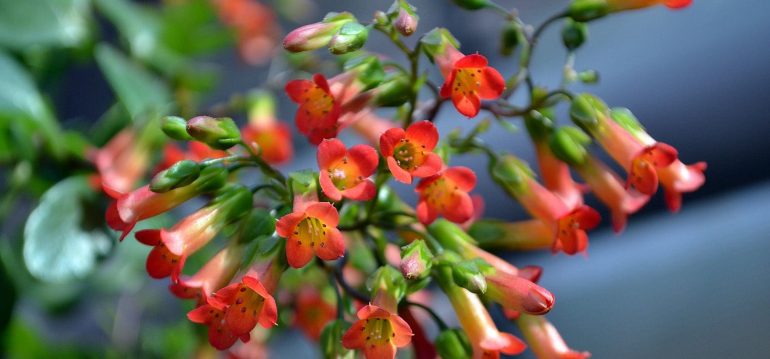
Kalanchoe alochashechny - flowers of this species differ from others in their size and shape. They are oblong, hanging, and orange in color.
Begonia: home care
Describing how to care for begonia at home, it is worth listing the requirements for the conditions of keeping a flower, watering it, feeding and pruning.
Necessary lighting
The plant is photophilous, but does not tolerate direct sunlight. The place for the flower should be well lit, so the window sill of the western or eastern window will do. If the pot is on the south side, then it is covered with blinds or curtains from the sunlight.
In winter, due to a lack of lighting in the morning, the bush is advised to be exposed to the sun's rays, otherwise, due to a lack of light, the stems will stretch out, and few flowers will form. But two varieties of a flower - begonia Elatior and Lorraine need to be illuminated in winter with phytolamps.
Temperature and humidity
Caring for and growing a begonia plant at home requires maintaining a certain temperature and humidity in the room.
Since the bush grows in the wild in the tropics, it is important to keep the air humidity within 60-70%. For this, spraying is used, but moisture should not get on the flowers and leaves.
For the purpose of moistening, the pot is placed on a pallet with wet expanded clay. An air humidifier is also installed in the room.
Ground requirements
Caring for potted begonia requires an optimal soil composition. The flower loves slightly acidic light soil, into which moisture and air quickly penetrate. Optimal substrate composition:
- sour high peat - 1 part;
- humus earth - 2-3 parts;
- coarse sand - 1 part.
In the store you can buy ready-made soil for begonias or flowering plants, which has a slightly acidic or medium acidity. A sufficiently light and breathable substrate is chosen, enriched with trace elements and nutrients.
When self-preparing the soil, use one of the options below:
- When caring for tuberous begonia, use a mixture of two parts of sand and leafy soil with the addition of 1 part of turf soil.
- To germinate tubers for their subsequent transplantation into a pot, a composition of leafy earth, moss and perlite, taken in equal proportions, is used.
- Ever-flowering varieties thrive in soil consisting of one part of sand, peat and humus, as well as two parts of leafy soil.
We select a pot for begonia
Depending on the root system, begonias are tuberous, with branched roots and with horizontal rhizomes. The main volume of the root system is located closer to the soil surface, therefore, preference is given to low wide pots of a rounded configuration. There must be drainage holes in the bottom so that the roots do not rot.
When choosing a suitable pot, observe the following rules:
cuttings are planted in low containers up to 6 cm in diameter;
young shoots with overgrown roots are planted in a pot with a diameter of 10 cm;
with an annual transplant of an adult begonia, they take a low pot, which is one third larger than the previous one;
no matter what material the container is made of.
Feeding begonias at home
Growing begonias at home requires regular soil fertilization. Top dressing is carried out taking into account the season. In the spring, the bush needs nitrogenous fertilizers for bright foliage color and active growth. From the middle of summer, the proportion of nitrogen in the nutrient mixture is reduced by increasing the percentage of potassium and phosphorus.
This is important for preparing the flower for the autumn-winter period.
As a top dressing, mineral and organic fertilizers are used, which are applied every 2 weeks. Nutrient mixtures are alternated. It is forbidden to feed dying and diseased plants.
Watering rules
It is important not to allow the potting soil to dry out. During watering, adhere to the following rules:
- In summer, the bush is watered every other day, without damaging the ground.
- In winter, the soil is moistened when the top layer dries out 10-20 mm in depth.
- After watering, excess moisture is drained from the pan to protect against root rot.
- For irrigation, use water at room temperature, settled for several days.

